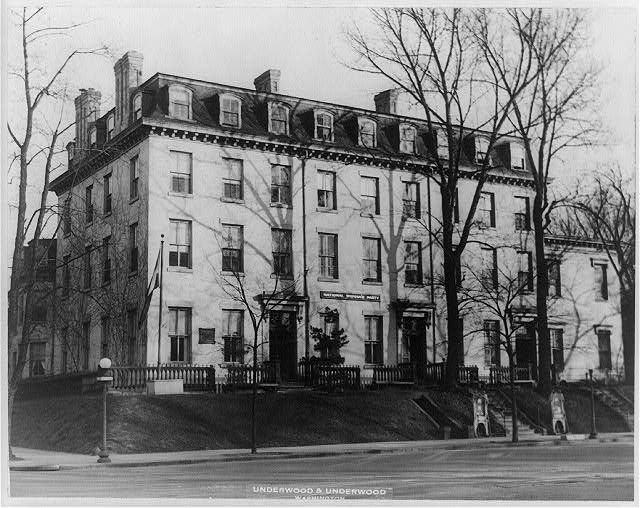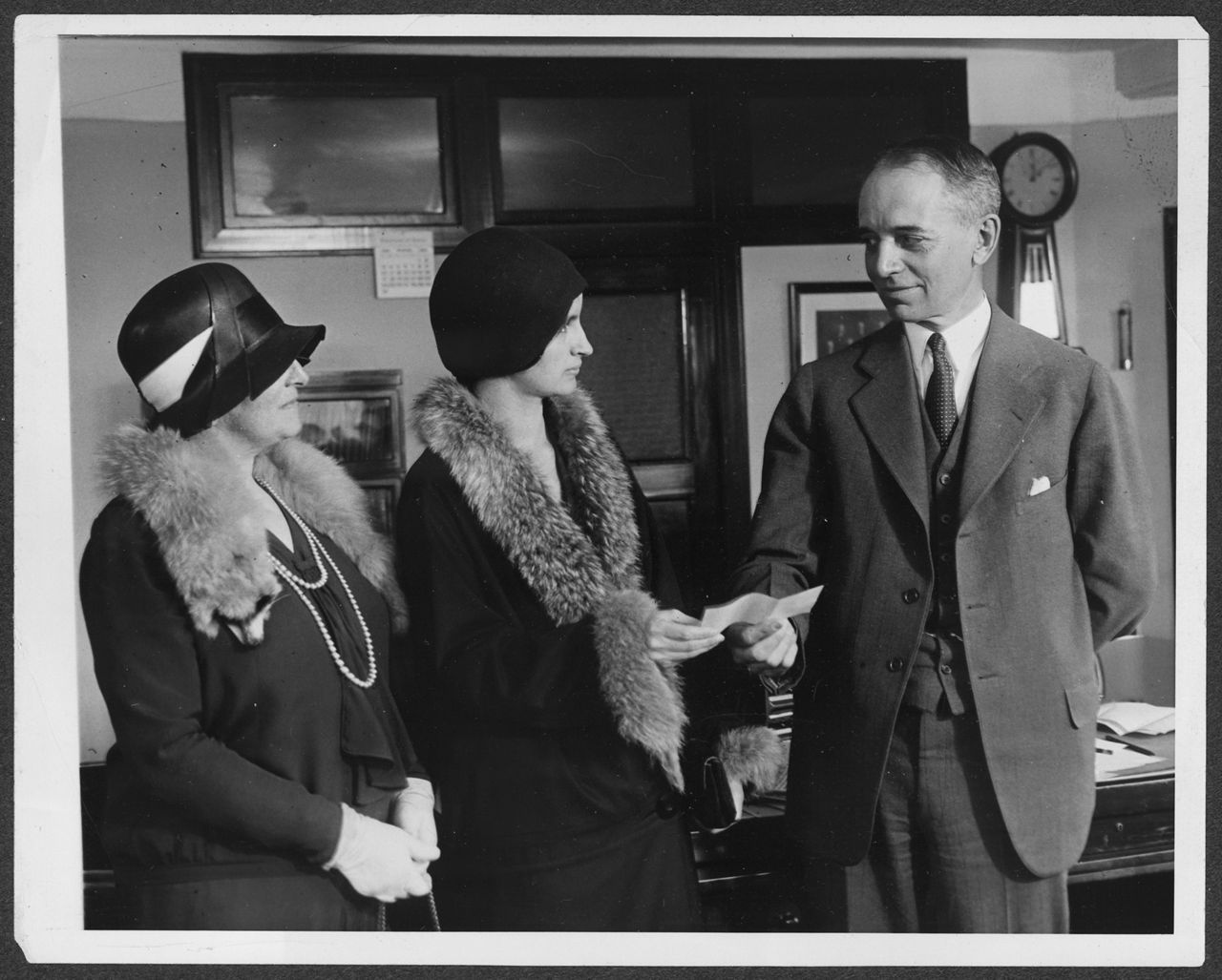The Supreme Court has played a key role in women’s rights for centuries: determining whether employment discrimination, financial equality, contraception, and most recently, abortion, would be the laws of the land.
But the opinions of the nine justices are not the only factors that have affected the lives of women in this country. That history goes much deeper than the bench; it is buried beneath the ground of the building itself.
The history of how this marble palace became the permanent home of the U.S. Supreme Court goes back to a time when many women had to fight to be part of the judicial process simply because of their sex.

“Without the advocacy of the women who came before me, I wouldn't have had many of the opportunities that I've had,” says Brittany Record, an associate attorney at Latham & Watkins law firm in Washington, D.C. “My story is sort of a reflection of the success that the women who came before me have had.”
Record cites her mentors as instrumental throughout her career, which has included time serving as a deputy solicitor general and clerking for two Supreme Court Justices, Justices Ruth Bader Ginsburg and Stephen Breyer.
“When you widen the historical lens, the progress that women have made in law is really extraordinary. And I think Justice Ginsburg is sort of an example of that,” says Record.

But even legal giants like Ruth Bader Ginsburg could trace the progress back even further to the women in law who pioneered a path.
One of the trailblazers Ginsburg remembered was Burnita Shelton Matthews, who in 1949 became the first woman to serve as a judge in a U.S. District Court.
With limited female role models available as she pursued her own career, the example set by Judge Shelton Matthews had a notable effect on Justice Ginsburg.
“By the time I got to the D.C. Circuit, she was in her 90s. She spoke with a soft, southern accent. She wore a lace collar and cuffs, but she was a woman of real steel,” Justice Ginsburg said at a speech in 2017.
From an early age, Shelton Matthews aspired to be a lawyer, against her family’s wishes. Despite the discouragement, she went to law school at night in Washington and eventually became involved with the National Woman’s Party.

During the 20th century, the National Woman’s Party was a branch of the American suffrage movement that took on a renewed aggression in the campaign for a federal statute to give women the right to vote.
“They were the first group to protest and picket in front of the White House,” says Elizabeth Novara, Women’s History Specialist at the Library of Congress. “They were known for being sort of the militant branch of the women's suffrage movement. I think it made the women's suffrage movement more visible to the public.”
After the 19th amendment was ratified in 1920, the National Woman’s Party continued working to advance the legal status for women in the U.S.
Shelton Matthews led the legal research team and spearheaded efforts to identify and produce publications citing discrimination against women in state laws. “A couple was divorced; the mother didn't necessarily have rights to the children. There's also women were disqualified for jury service. And that was true in many states,” says Navara.
The party was working to build a case for why there needed to be a federal amendment, known as the Equal Rights Amendment, that guaranteed equal rights regardless of sex. While Congress passed it in 1972, the amendment was never ratified by the states.
As the National Woman’s Party focused on national equality for women, the government turned its attention to the National Woman’s Party’s headquarters, known as the Old Brick Capitol.

For over 140 years, the Supreme Court did not have a building of its own – and in the late 1920s, federal officials zeroed in on the land.
Citing eminent domain, the government tried to seize the property. They offered a small sum in exchange for the National Woman’s Party Headquarters.
“What's interesting about the case is that the government was like, not straightforward at all. And so the government tried to claim that the land was not very valuable,” says Ephrat Livni, a lawyer and reporter for the New York Times.
In 1929, Shelton Matthews was the lead litigator arguing against the U.S. government, where she quickly made a reputation for her legal skills.
“She was quite creative about presenting evidence and disproving the government’s case,” says Livni.
“I believe that they assumed that the women would roll over easily and they just didn't. They didn’t just give up the land and they didn’t give it up cheap.
Ultimately, the government acquired the land, but Shelton Matthews and the National Women’s Party secured what at the time was the largest condemnation settlement the U.S. ever paid — almost 300-thousand dollars, equivalent to just over 5 million dollars today.

For those involved in the case, successfully disproving the government’s arguments was an achievement in the fight for women’s equality.
“Ten years before this case, the National Woman's Party was out protesting in front of the White House. They could not speak about the women's movement, about trying to get the vote, they could not speak about it without risking arrest because they didn’t have a permit to speak in front of the White House,”says Livni.
For many at the time, the settlement was a startling outcome.
“They just were literally not used to hearing women. There was not an expectation they would fight,” says Livni.
The story remains largely unknown; it’s even omitted from the history of the Supreme Court on their official website. But some argue it is a story worth sharing.
“It's the only way to keep a very the little bit of this women's legal history that we that we have and know about alive,” says Livni.
Today, the Supreme Court has more female justices than ever, but there’s a long way to go. Of the 116 justices to serve, six have been women.

In 2022, Ketanji Brown Jackson was sworn in as the first Black woman on the high court, 41 years after Sandra Day O’Connor made history.
While research shows that women make up a majority of law school students, they represent about a third of state and federal judges. There are efforts underway to boost the number of women on the bench.
“The most important part is the perspective that we bring to the bench and the things that we've experienced generally, collectively, obstacles that perhaps our male counterparts couldn't even understand, let alone have experienced,” says Judge Toni Clarke, President of the National Association of Women Judges.
Part of NAWJ’s mission is to bring more diversity into the judiciary.
"It's important to have women on the bench, women lawyers, who, you know, reflect the community we serve,” says Clarke.
According to a report by the American Bar Association, roughly 1 in 4 female federal judges — around 29 percent — were lawyers of color — 13 percent Black, 8 percent Hispanic, and 5 percent Asian.
Moving towards a bench more reflective of society, Clarke argues, is necessary for justice.
“You have women and people of color coming before you and they don't see anybody that looks like them, you know, there's a thought that, well, maybe I'm not going to get a fair shake,” says Clarke.
Many hope a more diverse bench will also continue the path towards progress set by the barrier-breakers before them.
“I think ideally at some point we would maybe not make these distinctions —women in law, women in science. But, but at this juncture, we're not so entrenched,” says Livni.
Brittany Record wants to see more women increasingly reflected in the leadership of law, and, as a new mom, hopes there’s continued flexibility so attorneys can balance all facets of their identity.
“The thing that I would hope for the future is that women can feel empowered to take advantage of the skills that are authentic to them and to be sort of the, the best version of themselves and not feel as though they have to fit into a particular bucket to be taken seriously,” says Record.
The Supreme Court – the nation’s highest court and a symbol of justice, with women as integral to its support as the 16 marble columns at its entrance.




